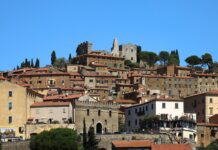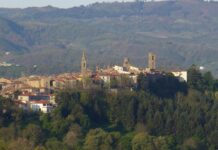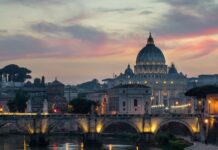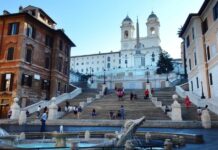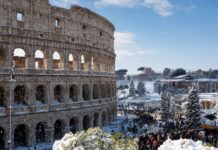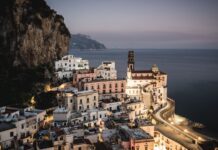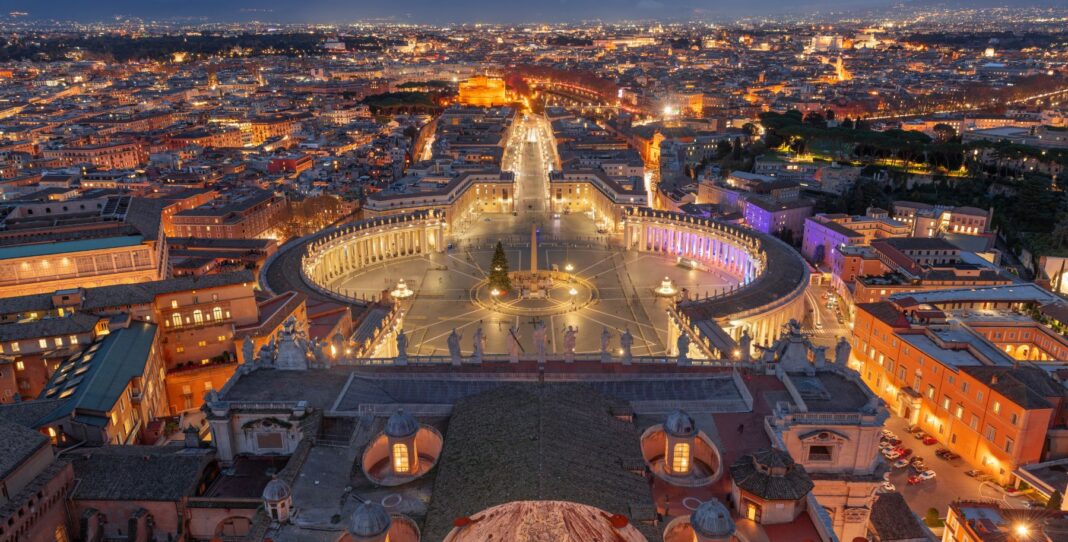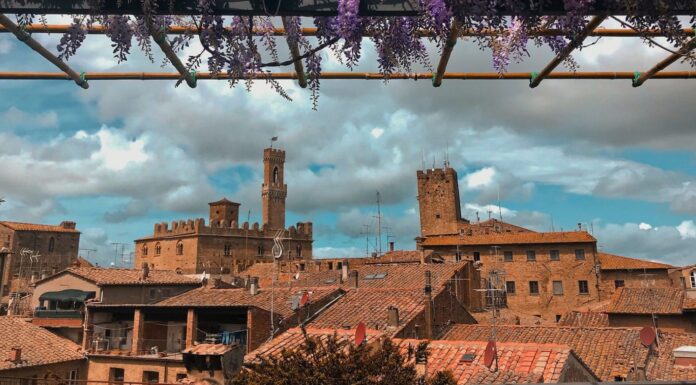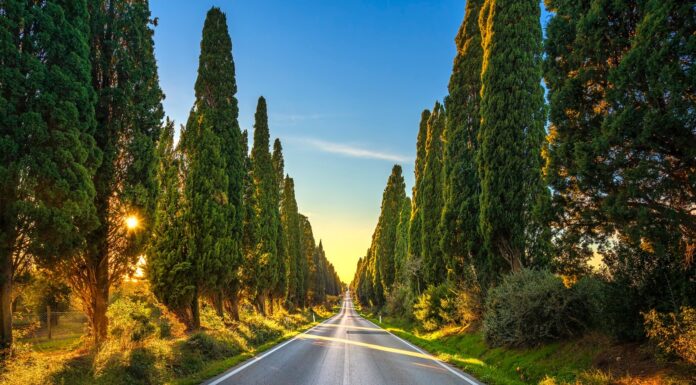When considering a trip to the famed Vatican City, you might find yourself wondering how big the city actually is! We’re here to help.
The Vatican City is, in fact, its own country: an enclave surrounded by the city of Rome. With a population of around 750 people, it’s the smallest independent state – land wise, and people wise – in the whole world. The name,which is officially Stato della Città del Vaticano in Italian, probably comes from the Etruscan settlement Vatica or Vaticum. A visit to this iconic city state offers impressive historical, artistic, and religious sites.
From a look at the city’s layout, to its history, to the best places to visit, we’ll make sure you have all the information you need to make the most of your time in its 0.17 square miles. But let’s not get ahead of ourselves…
How Big is Vatican City?
First of all, how big is Vatican City in miles? The landlocked area of Rome measures about 42 hectares, approximately 0.17 square miles – the size of about 62 soccer fields. You could fit 8 Vatican Cities inside of Central Park, or 120 on the Island of Manhattan! It’s about 0.6 miles long and 0.5 miles wide.
This all makes Vatican City the smallest independent nation state in the entire world.
Read More: Rome In Winter – 10 Things to Do, Best Places to Stay, and More
Where is the Vatican City
Now that you know how small Vatican City is, where is this place?
The Vatican City is located within the city of Rome, on the west bank of the Tiber River. Booking a hotel in Rome is a great way to visit.
The Vatican City sits on a hill that has been called the Vatican Hill since long before Christianity. The northernmost point of the border can be found at the intersection of Viale Vaticano and the Via Leone IV, the southernmost at the intersection of Via della Stazione Vaticana and the Via di Porta Cavalleggeri. The western and easternmost points are the at the intersection of the Viale Vaticano and the Via Aurelia, and the famous Saint Peter’s Square, respectively.
Population Density of the Vatican City
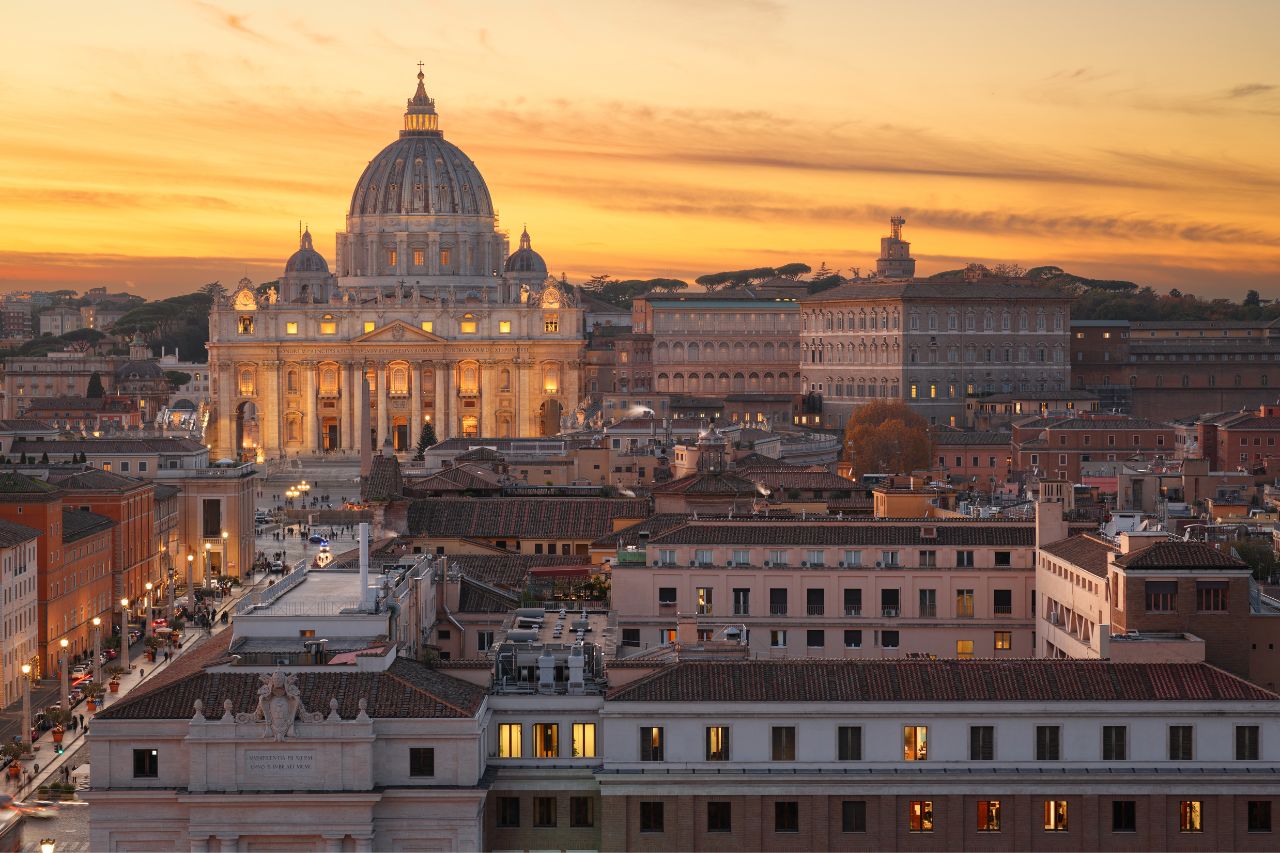
Now that you know how small Vatican City is, let’s consider how many people live there. About 764 report their residence as Vatican City, which makes the population density of Vatican City is about 4,038 people per square mile (1,559/km2). Of course, the daily “population” multiplies with visitors, tourists, and religious pilgrims.
Sovereignty and Independence of the Vatican City
The size of the Vatican City may be small, but its history is long and complex. Between the 4th century to 1870, the Vatican had domain over territory around Rome, and used it as the capital for the Papal States. Then, in 1929, Italy’s Fascist leader Benito Mussolini and the cardinal secretary of state Pietro Gasparri signed the Lateran treaty in which the Papacy acknowledged Italy, with Rome as the capital, and Italy acknowledged the Vatican City’s independence and sovereignty. It required Italian to be the official language of the Papacy and Rome to be considered the head of the Catholic Church, and Catholicism to be the official religion of Italy with religious education being compulsory in schools. This agreement was later confirmed by the Italian Constitution in 1948, and lasted until 1985 when Catholicism was removed as the official religion of the Italian state.
Sovereignty and Independence Today

Today, the Vatican City retains its independence and has its own pharmacy, train line, radio station, post office, military barracks, and government buildings. Citizenship is granted neither by bloodline or birthright, but by jus officii, or by approval for certain work in the Holy See, the government of the Catholic Church. Citizenship is revoked when the employment status is no longer active.
Tourism and Economy in Vatican City
No need to exchange currency when you visit the Vatican City! Since 2002, the Vatican has used the Euro as its currency. The Istituto per le Opere di Religione, or the Vatican Bank, runs the country’s financial activities and is permitted to issue a certain number of euro coins – they are quite rare and popular among collectors. The bank even has an ATM with a Latin mode!
Having considered how big (or small!) Vatican City is, it might be interesting to think about its workforce. Vatican City employs about 2000 people – more than live within its limits! It generates income from selling stamps and coins in its post office along with medals and tourist mementos, selling entry to its museums, and producing books and other written material. Vatican City is a great stop for souvenirs in Rome.
7 Important Things See in Vatican City
Now that you know how small Vatican City is, you might be wondering how much there is to do in such a small area. There is tons to see! If you are interested in European and Catholic history, you won’t want to miss any important sites. Here are our recommendations for must-visit sites.
1. Vatican Museums
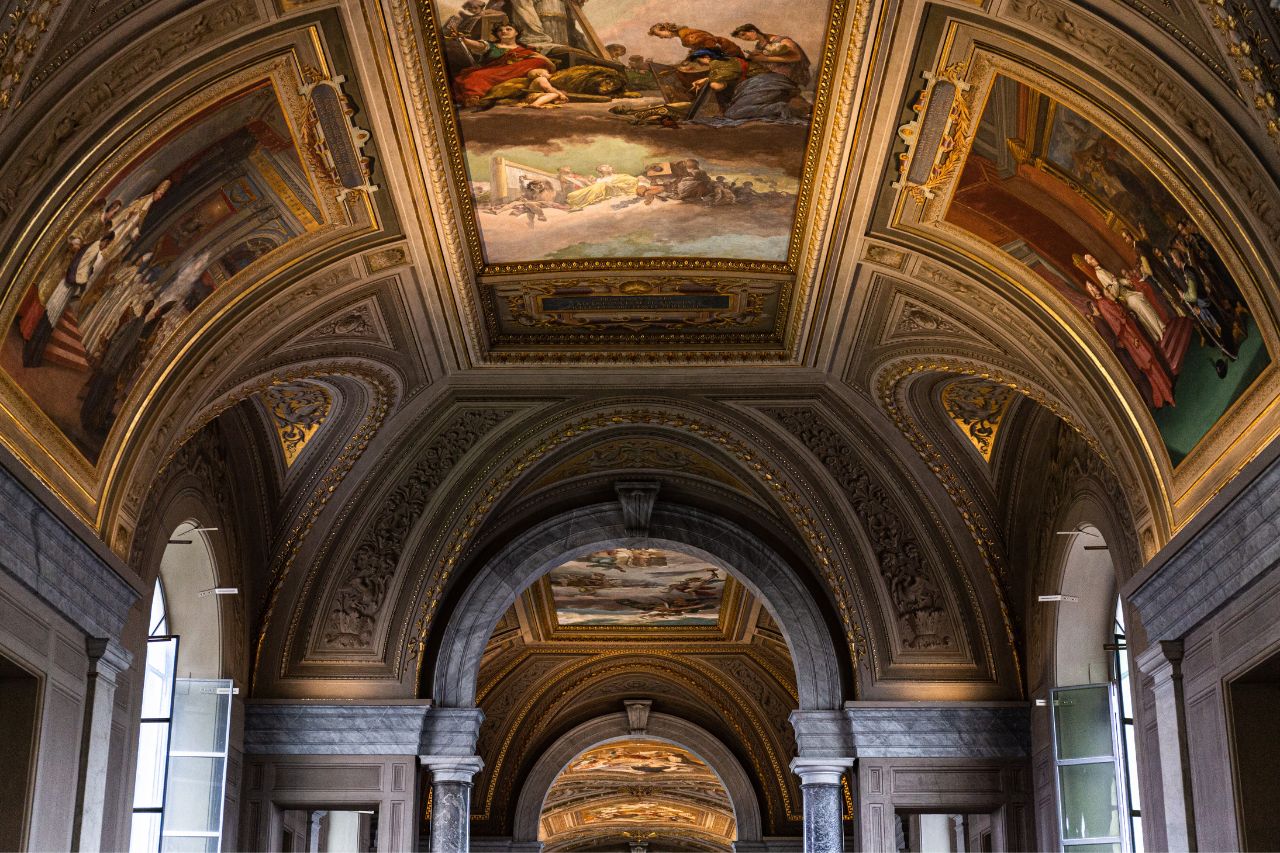
Arguably the main attraction of a visit to Vatican City, the Vatican Museums hold most of the treasures of which the Vatican permits public viewings. They include the Pinacoteca Vaticana, sculpture museums, the Collection of Modern Religious Art, and Historical museums. You can buy an all-inclusive ticket for € 17.00, or reserve a “skip the line” ticket for €5 additional online. There are discounts for students and those making religious pilgrimage.
2. St. Peter’s Basilica
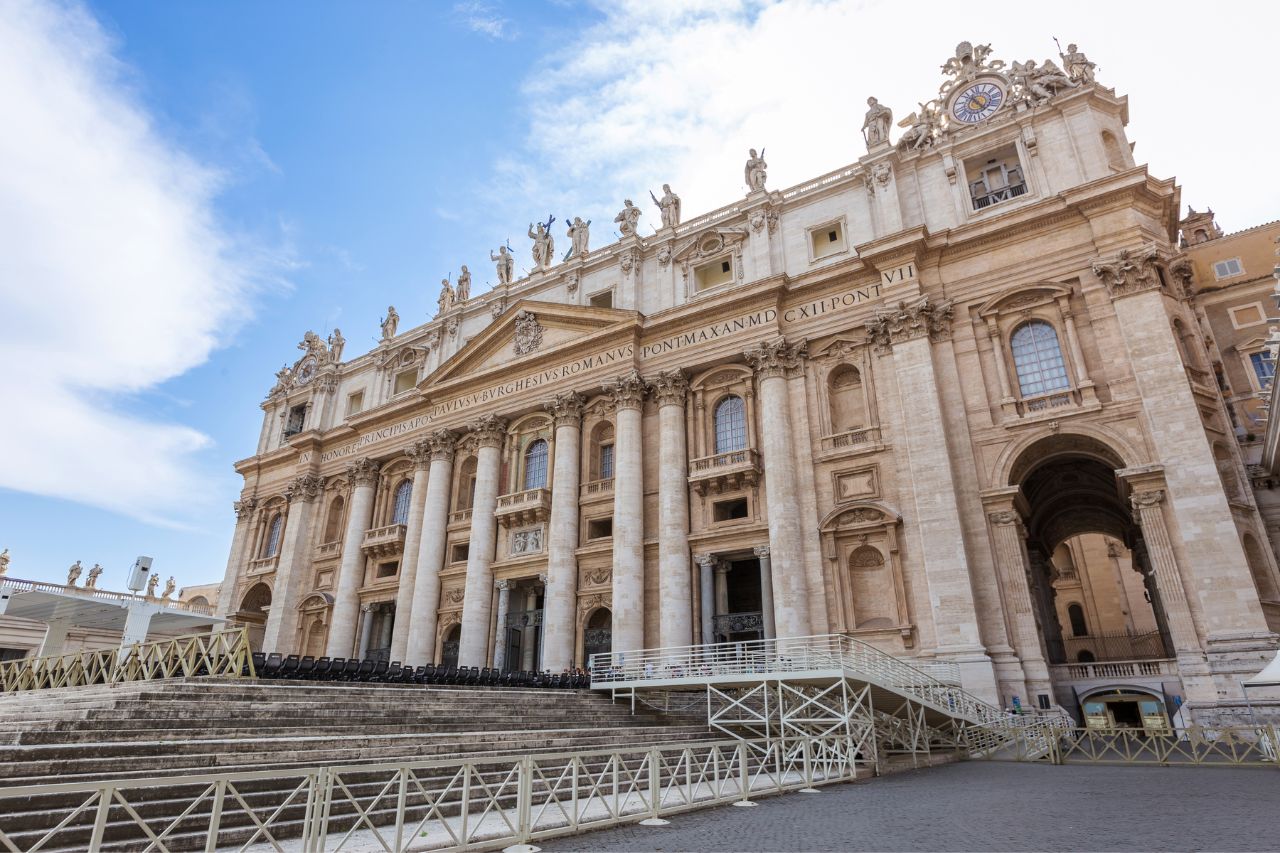
Described by American writer Ralph Waldo Emerson as “an ornament of the earth,” St. Peter’s Basilica’s dome dominates the skyline of Rome and is considered the first of Rome’s four major basilicas. The church closes on Sunday mornings for the weekly “Angelus” Papal address to the piazza at noon – which would be an advantage or disadvantage depending on your goals. St. Peter’s Basilica is free to enter, but to climb the dome it will cost €8, or €10 to take the elevator. Be sure to follow the Vatican dress code: covered shoulders and legs. You should also be prepared to leave behind any food, knives, and hats.
3. Bernini’s Colonnades at Saint Peter’s Square

As you explore the size of Vatican City by foot, don’t miss the impressive colonnades of Saint Peter’s Square. The architect Gian Lorenzo Bernini designed the piazza, or square, in front of St. Peter’s. He included four rows of 284 43-foot Doric columns – called colonnades – that embrace the piazza without closing it in entirely, and which he considered to represent the arms of the Church as a metaphorical Mother. (The city of Rome also has a lot of other historic columns!)
4. The Sistine Chapel
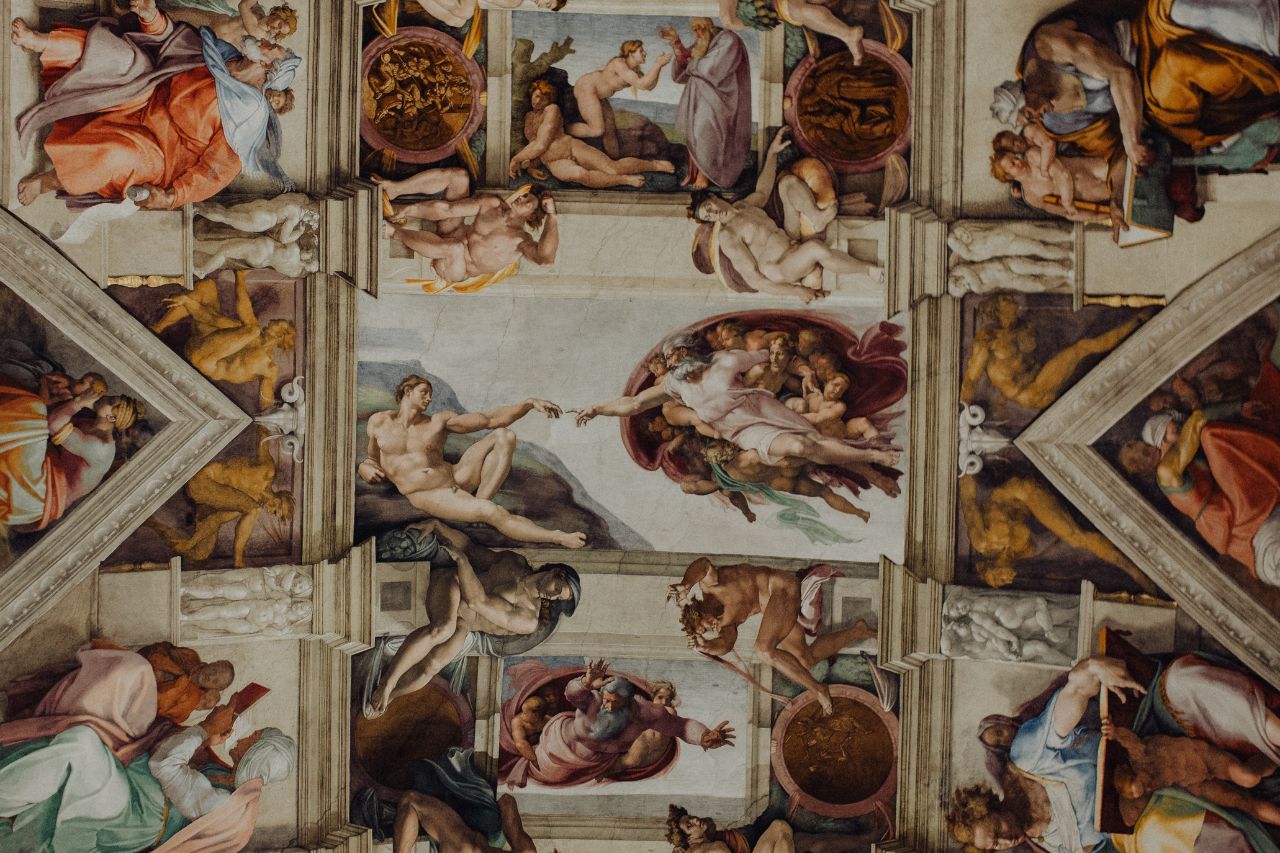
The famed Sistine Chapel is located in the Apostolic Palace – the Pope’s official residence. It was built between 1473 and 1481 by the order of Pope Sixtus IV, and features artwork by important Italian Renaissance artists: Sandro Botticelli, Pietro Perugino, Pinturicchio, Domenico Ghirlandaio and Cosimo Rosselli, and, of course, the ceiling by Michelangelo. The Sistine Chapel is part of the Vatican Museums, and can be visited with the same ticket. To skip the line, tickets can be reserved online with the Vatican Museums. If tickets are sold out, consider a tour group – tour guides are able to hold tickets for their groups. Traveling to Rome in the off season is another great strategy!
5. The Vatican Gardens
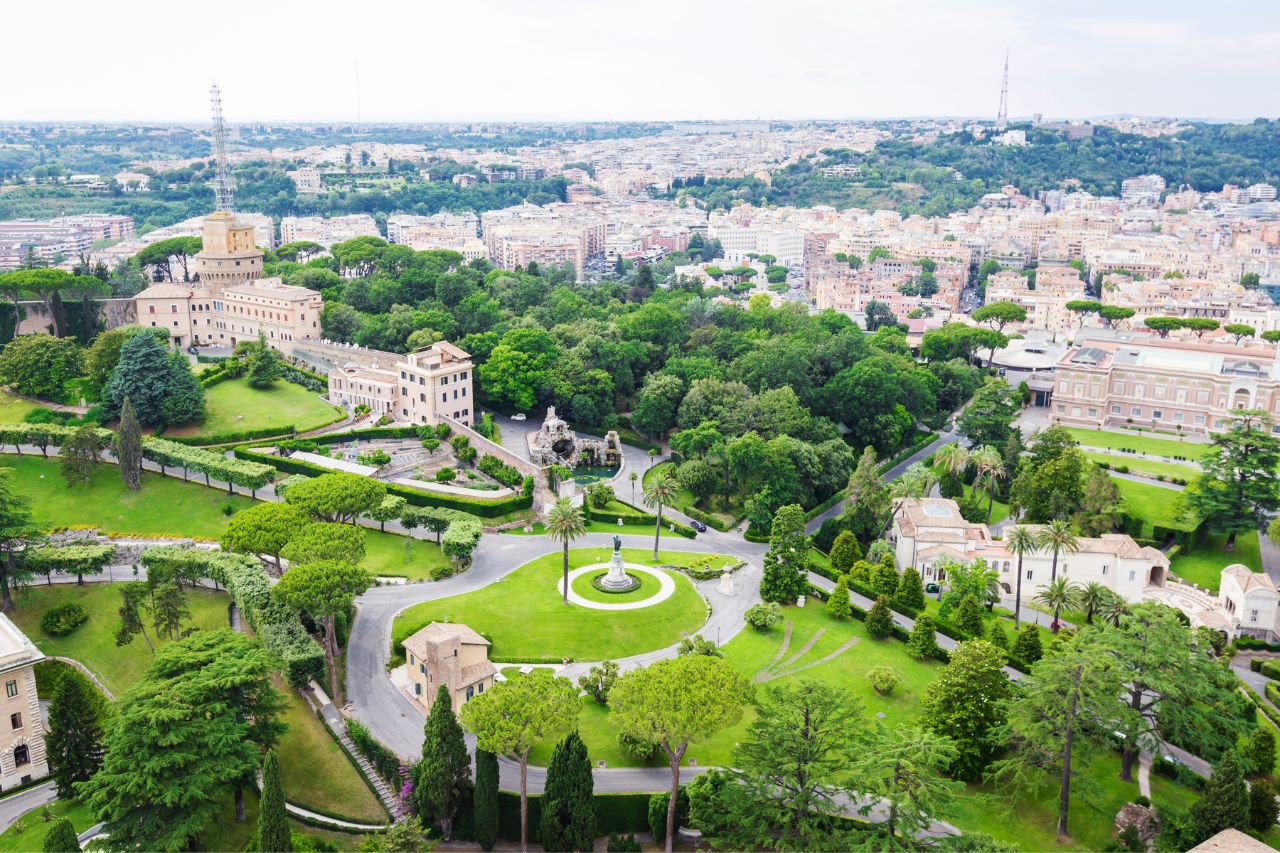
About half of the Vatican City is made up of buildings, while the rest is saved for open space and parks, such as the Vatican Gardens. These gardens cover 57 acres (about half the city!): fountains, paths, statues, and palms will surround you. They also offer a stunning view of St. Peter’s Basilica. Visits are guided and can be booked through the Vatican’s website.
Read More: Rome Gardens – 14 Gardens That Make the Eternal City Bloom
6. Mosaic Studios
The Vatican Mosaic studio is a hidden gem of Vatican City. Dedicated to creating and then restoring Papal mosaics, the Studio del Mosaico Vaticano was founded officially in 1727. The artists in the workshop used elaborate methods, allowing them to create very small tiles that resulted in highly detailed masterpieces. Visits are possible with an appointment, such as with a tour guide.
7. The Necropolis of the Via Triumphalis
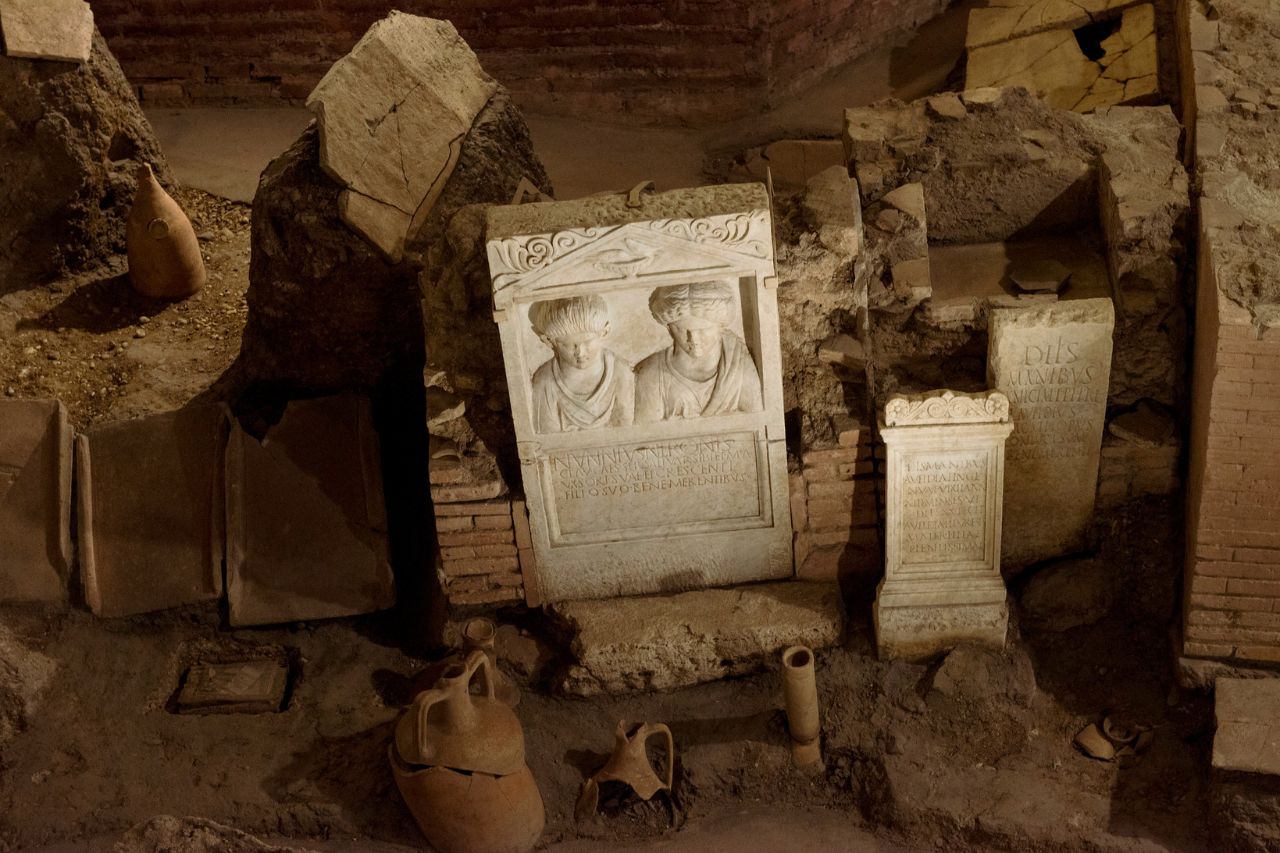
Considering how small Vatican City is, we shouldn’t overlook its underground! Part of the collection of Vatican Museums, the archeological site Necropolis of the Via Triumphalis extends under the Vatican City and was discovered very recently in 2003. This ancient Roman burial site is located on the edge of the Vatican Hill. It contains both single and group burial sites, with paths and roads linking separate rooms likely used for ceremonies by the cult of the dead. Recently, the Vatican began including this site with the Vatican Museums. You can also take a virtual tour on the Vatican website.
Read More: Rome 3 Day Itinerary – Unearthed Historical Gems
Where Does Vatican City Get Its Name From?
The name for the Vatican City is said to likely originate from an Etruscan settlement called Vatica or Vaticum, located on the Vatican Hill. During the Roman Republic, Ager Vaticanus was used to refer to a marsh on the Tiber River across the way from Rome, which led to Romans considering the area quite foreboding and unsettleable. Later, Vaticanus was used to refer to what is today known as the Vatican Hill.
FAQs about Vatican City
Is the Vatican City a Country?
Yes, the Vatican City is its own independent nation state – the smallest in the world!
How Many Miles long is Vatican City?
Vatican City is about .6 miles long and .5 miles wise. It is quite easy to walk from one side to the other.
Can you just Walk into Vatican City?
Yup, you can just walk into the Vatican City. Despite being a nation state, there is no border control or currency change.
Who Lives Inside the Vatican City?
Only people who contribute to the religious operations of the Vatican and the Swiss Guards who protect those workers are allowed to live inside the Vatican City.


